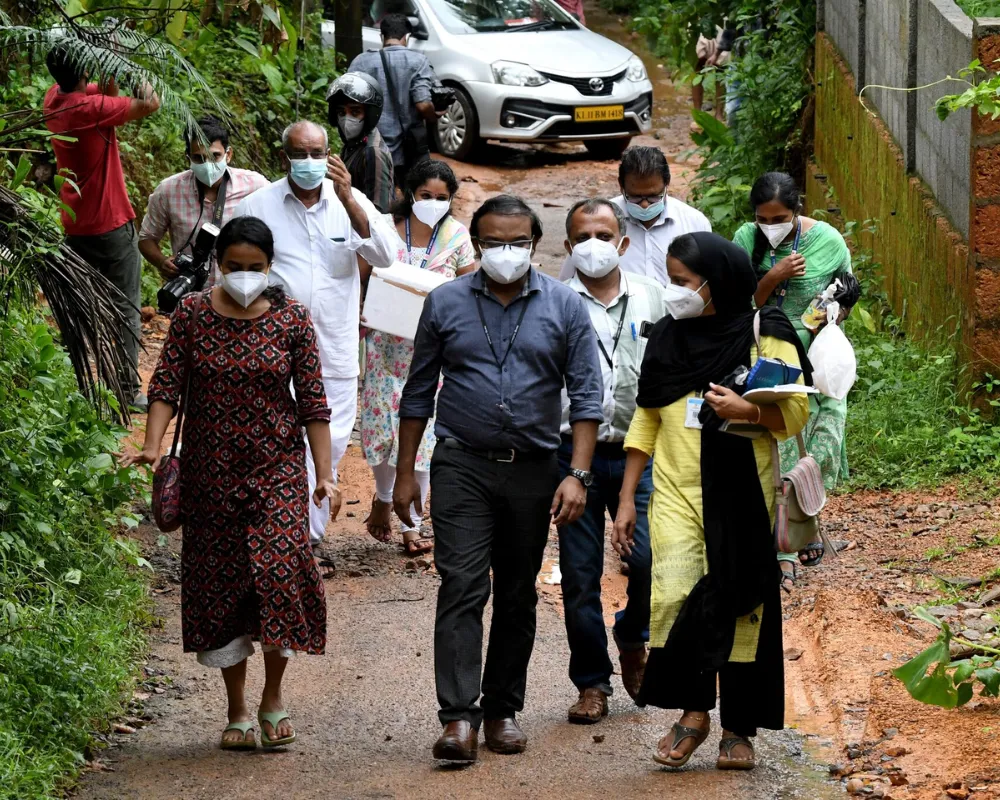Kerala, a southern state in India renowned for its advanced healthcare system, has unfortunately become a recurrent hotspot for Nipah virus (NiV) outbreaks. While the state has demonstrated remarkable efficiency in containing these outbreaks, their repeated occurrence highlights a persistent public health challenge and the complex interplay between human activity, animal reservoirs, and environmental factors.
What is Nipah Virus?
Nipah virus is a highly pathogenic zoonotic virus, meaning it can spread between animals and humans. It belongs to the Henipavirus genus in the Paramyxoviridae family. The natural reservoir for NiV is fruit bats, particularly those of the Pteropus genus, also known as flying foxes. Humans can contract the virus through direct contact with infected animals or their bodily fluids, consumption of contaminated food (like raw date palm sap or fruits bitten by bats), or from person-to-person transmission through close contact with an infected individual.
The symptoms of Nipah virus infection range from asymptomatic infection to acute respiratory illness and fatal encephalitis (brain inflammation). Initial symptoms often include fever, headache, myalgia (muscle pain), vomiting, and sore throat. This can progress rapidly to dizziness, drowsiness, altered consciousness, and neurological signs indicative of acute encephalitis, often leading to coma and a high fatality rate (ranging from 40% to 75% or even higher in some outbreaks). There is currently no specific antiviral treatment or vaccine available for Nipah virus, and management primarily focuses on supportive care.
History of Nipah in Kerala
Kerala has experienced several Nipah outbreaks since 2018, with the Kozhikode district being a frequent epicenter.
- 2018 Outbreak: The first significant outbreak in Kerala occurred in May 2018 in Kozhikode and Malappuram districts. This was the state's deadliest outbreak, with 17 confirmed cases and 16 deaths, resulting in an alarming case fatality rate of 88.8%. The response was characterized by rapid and coordinated efforts from state and central government agencies, which successfully contained the spread within three weeks.
- 2019 Outbreak: A smaller outbreak was reported in June 2019 in Ernakulam district, involving a single case that was successfully managed without secondary transmission, demonstrating improved preparedness.
- 2021 Outbreak: Another localized outbreak occurred in Kozhikode district in September 2021, resulting in one fatality. Again, robust contact tracing and containment measures prevented wider spread.
- 2023 Outbreak: In September 2023, Kozhikode witnessed another Nipah outbreak with six confirmed cases and two fatalities. This outbreak further reinforced the need for continuous vigilance and rapid response.
- Recent Developments (July 2025): As of mid-July 2025, Kerala is again on high alert following confirmed Nipah cases, including fatalities, reported from districts like Malappuram and Palakkad. Authorities have identified hundreds of contacts, implemented containment zones, and intensified surveillance and awareness campaigns.
Analysis: Why is Kerala a Nipah Hotspot?
The recurring nature of Nipah outbreaks in Kerala, particularly in its northern districts, prompts a deeper analysis of contributing factors:
- Ecological Factors: Kerala's lush, tropical environment, with its abundant fruit bat populations (the natural reservoir of the virus), creates a favorable ecological niche for NiV. The proximity of human settlements to bat roosting sites, especially during certain seasons when fruit availability changes, increases the risk of spillover events.
- Human-Bat Interface: The consumption of fruits potentially contaminated by bat saliva or urine, or practices involving date palm sap (which bats are known to lick), provides routes for direct bat-to-human transmission. While the exact spillover route for all Kerala outbreaks remains under investigation, the link to bats is well-established.
- Population Density and Connectivity: Kerala is a densely populated state with high mobility, both within its borders and internationally. This makes rapid contact tracing and containment crucial, as a delayed response could lead to widespread human-to-human transmission, especially in healthcare settings.
- Healthcare System Efficiency (and its Double Edge): Kerala's robust and vigilant public health system, while highly effective in identifying and containing outbreaks, might also contribute to the perception of "more outbreaks." It's possible that other regions in India or Southeast Asia also experience Nipah cases that go undetected or misdiagnosed, whereas Kerala's strong surveillance network quickly identifies and reports them. This efficiency, while commendable, underscores the persistent threat.
- Behavioral Practices: Awareness campaigns are critical to educate the public on safe practices, such as avoiding bat-bitten fruits and ensuring proper hygiene. However, changing long-standing cultural practices or behaviors can be challenging.
- Socio-economic Factors: While not a primary driver, the interconnectedness of communities through markets and social gatherings can facilitate rapid local spread once a spillover event occurs.
Kerala's Proactive Response and Lessons Learned
Despite the challenges, Kerala's response to Nipah outbreaks has been lauded globally as a model for public health preparedness and containment. Key strategies include:
- Rapid Case Identification and Isolation: Prompt diagnosis, often facilitated by on-site diagnostic facilities, and immediate isolation of suspected cases are crucial.
- Aggressive Contact Tracing: Extensive contact tracing, sometimes involving hundreds of individuals, helps identify and monitor those potentially exposed, breaking chains of transmission.
- Community Engagement and Awareness: Widespread public awareness campaigns educate citizens about symptoms, preventive measures, and the importance of reporting suspicious cases.
- Strict Infection Control: Rigorous infection prevention and control protocols in healthcare settings are vital to prevent nosocomial (hospital-acquired) transmission, which has been a feature in some past outbreaks.
- Multi-Sectoral Coordination: Effective collaboration between health departments, local self-governments, animal husbandry, and other relevant agencies is essential for a coordinated response.
- Research and Surveillance: Continuous research into bat populations, viral strains, and potential spillover pathways is critical for long-term preparedness.
The recurring Nipah outbreaks in Kerala serve as a crucial reminder for global public health of the ongoing threat posed by zoonotic diseases. While Kerala has demonstrated its capacity for effective containment, sustained vigilance, continued public awareness, and further research into the ecological dynamics of the virus are paramount to mitigate future risks and protect its population.
 Ritika Das
Ritika Das







 Trending Now! in last 24hrs
Trending Now! in last 24hrs